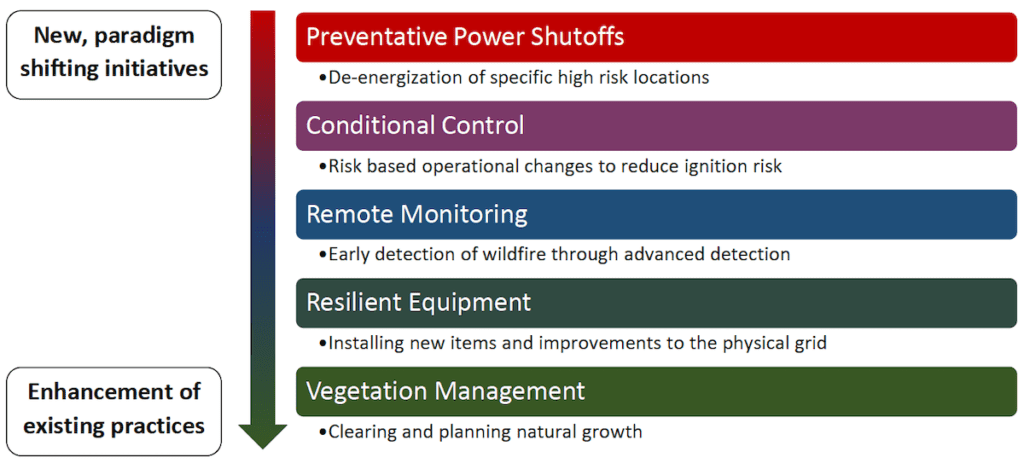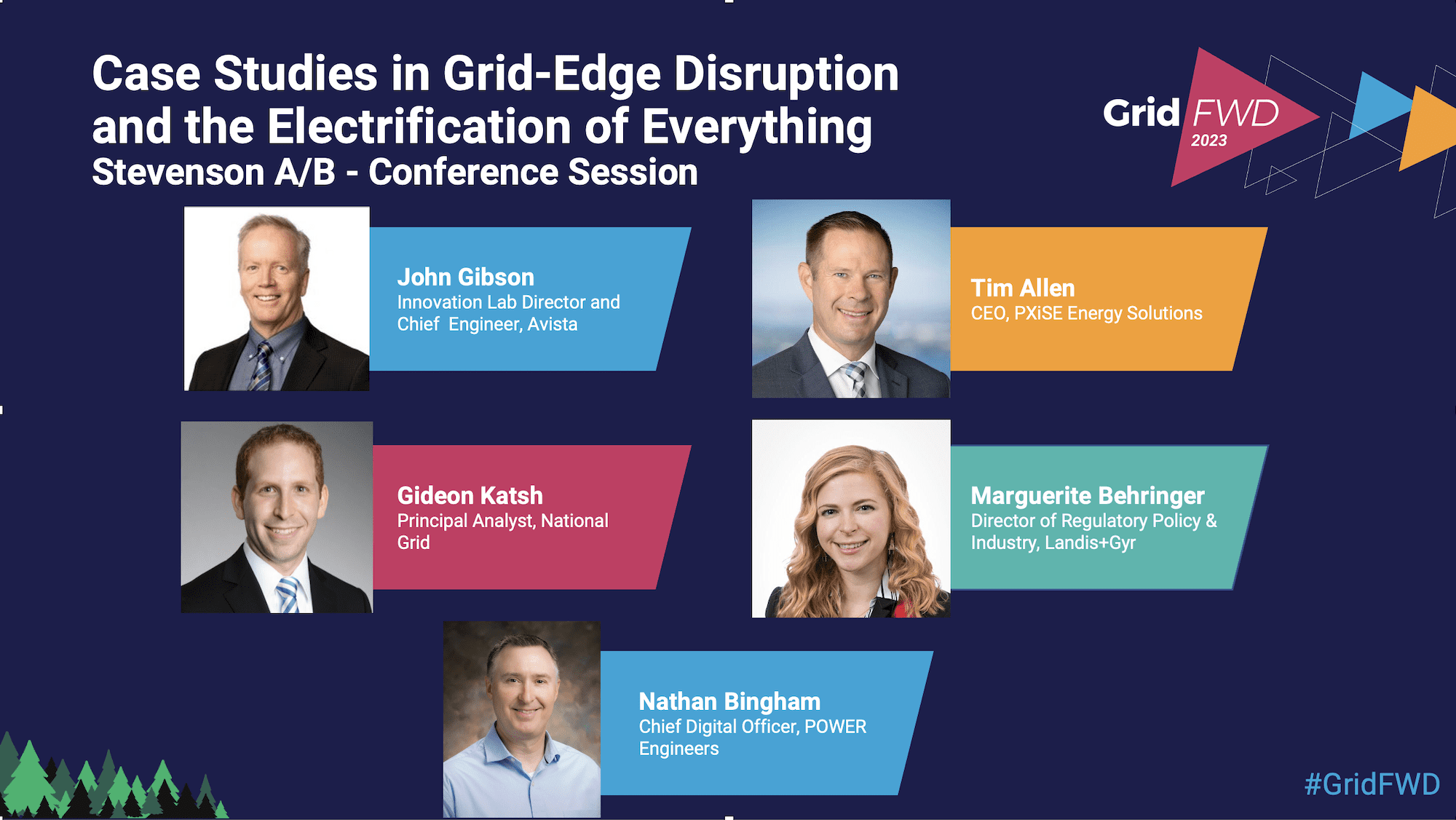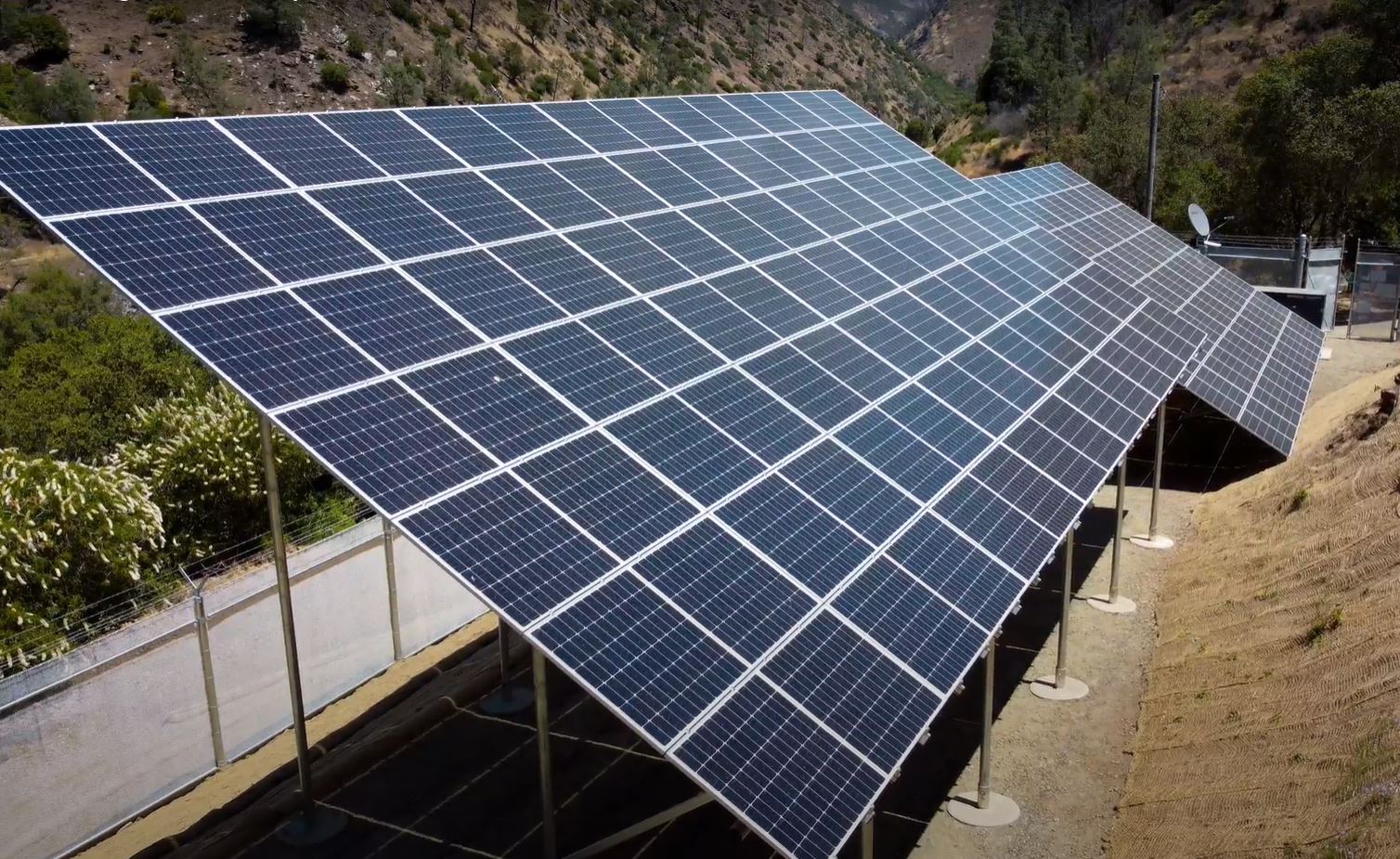An article by Katie Bertcher, Larry Gelbien, and Stuart Schare
Guidehouse Energy, Sustainability, & Infrastructure
Many utilities in the western United State are ramping up wildfire planning and management efforts in light of increasing wildfires generally and, more specifically, to address the related risk to utility lines and the potential liability for starting wildfires. Simply “doing more” of the existing utility reliability and resiliency strategies will not be enough, especially given that some of the emerging wildfire mitigation strategies require proactive or automated power shut-off, which ultimately decreases reliability metrics. So, what does the new paradigm look like, and how can utilities build the system to a level of resiliency to maintain both reliability and safety in the face of increasing wildfire risk?
These questions were tackled at the GridFWD 2022 conference in Denver, which featured sessions including “Community Partnerships for Wildfire Mitigation,” “Leveraging Advanced Tech to Address Wildfire Risk,” and “Managing the Grid in Extreme Weather Conditions.” These sessions illuminated the many ways that utilities are grappling with the thread of wildfire, including “hardening” systems through covered conductors and steel poles; “sectionalizing” the grid to enable emergency power shutoff when fire risk is imminent; and deploying remote sensing technologies to improve “situational awareness”.
Among the panelist insights:
- Response to wildfire and extreme weather are creating new challenges to managing the grid, and there aren’t always enough trained personnel available to address the needs.
- • Advanced planning for outages and disaster response is increasingly important, from the mundane logistics of rapid equipment delivery to advanced monitoring techniques that allow visibility into emerging dangers.
- Utilities and regulators need to become comfortable with a more agile approach to employing innovative grid management technologies and practices. In the view of one panelist, we can’t prevent every fire, but we change our way of thinking about utility operations and the regulatory approval process, and we can rapidly deploy and test new techniques to see what works best to mitigate the risks.

These insights and the increasing danger of wildfire suggest the need to shift away from a “reliability-first” paradigm to one that accepts some level of decreased reliability in the name of public safety—at least in the short term. The new paradigm embraces the concept that increased resiliency across the system can support both reliability and safety, and should be pursued through advanced planning, use of more robust equipment and materials, and changes in operational practices that provide early identification of threats and rapid adjustments to work procedures.
Click to read the entire article, Wildfire’s Legacy: Paradigm Shift to a More Resilient Grid.
Grid Forward thanks Guidehouse for writing this article.
Photo: Creative Commons license Liza Simmons, Public Information Officer, USFS.



